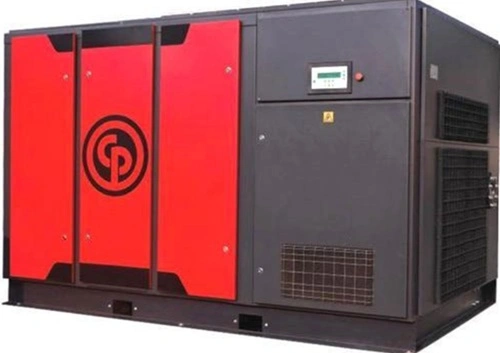Purchasing an air compressor may feel like a straightforward task. But without careful evaluation, you may end up with a machine that either underperforms or costs more to run than expected. Compressors are used in everything from small garages to large industrial plants. Identifying the right model depends on how, where, and how often you plan to use it.
This detailed buyer’s guide explores the practical aspects of selecting the right air compressor. It focuses on power, pressure, type, and usage. It also covers lesser-known considerations that can influence performance and cost over time.

Start by Understanding the Basics
An air compressor is a machine that turns power into pressurised air. That air is then stored in a tank and released to power tools, clean surfaces, or drive automated systems. You will come across two common values on every unit:
- CFM (Cubic Feet per Minute) or L/min: The volume of air the compressor delivers
- PSI (Pounds per Square Inch) or Bar: The pressure at which it delivers air
These two values should not be ignored. Always match them to the requirements of the tools or machines you plan to use. If the pressure or flow is too low, you will see tool lag and inconsistent results.
Clarify What the Compressor Will Be Used For
Some compressors are built for short, low-duty tasks. Others are made for round-the-clock industrial operations. Your choice should be based on the actual workload, not just the rating on the label. Think about how many tools will run together.
Identify how long each tool will be used during the day. Also consider if the tasks require constant air flow or only short bursts. If you are working in a small garage with a few power tools, you will need a different setup than a production line running eight hours daily. Underestimating your needs often leads to poor tool performance. Overestimating may lead to higher operating costs.
Use the Right Factors to Compare Models
When you review options, focus on more than just the horsepower or price. Here are key factors that make a real difference:
- Tank capacity: Larger tanks offer more consistent output and fewer restarts. This is helpful in continuous-use situations. Smaller tanks are compact but fill up and empty faster.
- Motor type and power source: Electric models are common for indoor spaces. Petrol or diesel units work well in outdoor and remote environments.
- Air flow and pressure: Always choose a unit that delivers more CFM than your maximum estimated need. This provides a buffer during peak demand.
- Duty cycle: It indicates the number of times a compressor can operate in an hour, without being affected by complications like overheating. Industrial users should aim for a higher duty cycle to avoid interruptions.
These technical details can affect energy use, wear and tear, and even warranty claims over time.
Consider Where the Compressor Will Be Used
A compressor that works well in one space might be unsuitable in another. Always think about the setting. If the compressor needs to be moved frequently, portability becomes paramount. Hence, ensure that the machine is paired with wheels, backed by a sturdy frame, and incorporates a compact design. For fixed installations, weight matters less than stability and access for service.
Noise is another factor that is often overlooked! Some compressors are too loud for residential areas or indoor workspaces. If the machine runs for long hours near people, quieter models are worth the investment. Make sure the power supply at your complements the compressor’s voltage and power rating. Otherwise, you risk damaging the motor or tripping the supply circuit.
Plan for Air Quality and Accessories
Compressors do not just supply air. They also collect moisture, dust, and oil from the surroundings. Without proper air treatment, this contamination reaches your tools and damages them over time.
Filters, dryers, and regulators are important additions. So are quality hoses, connectors, and valves. These accessories protect your tools and improve system reliability. Do not treat them as optional extras. Include them in your budget and installation plan.
Think About Long-Term Use, Not Just Installation
Some compressors may cost less upfront but require more frequent servicing. Others may consume more electricity. These long-term costs often go unnoticed during the buying process. Check the warranty terms. Find out if spare parts are easy to source. Ask about service availability in your location. If your needs might grow, look at models that allow future upgrades or modular expansion. Be sure to take your time and consider all the necessary parameters to make the best purchase decision.
Conclusion
Selecting an air compressor is a technical decision that should be based on your real-world usage. The size, power, tank, and accessories all contribute to performance and durability. A mismatched unit will slow down your work and increase maintenance costs.
Individuals who are on the lookout for reliable machines can collaborate with Chicago Pneumatic Compressors. The company offers a range of air systems that deliver consistent performance and long-term support.
Santosh Kumar, the author behind IndiasStuffs.com, is passionate about sharing valuable insights on a variety of topics, including lifestyle, technology, and Indian culture.
Page Contents

